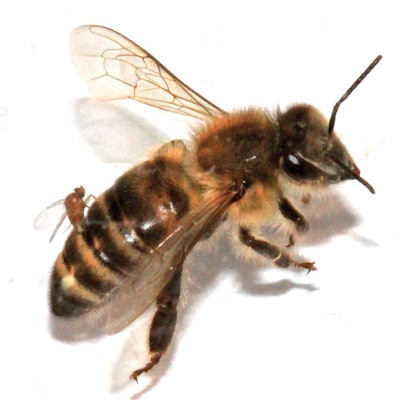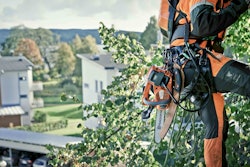 The Apocephalus borealis lays its eggs in the honeybee’s abdomen.
The Apocephalus borealis lays its eggs in the honeybee’s abdomen.Photo: Wikipedia
While the zombie apocalypse remains fictional for humans, it is all too real for honeybees and may be contributing to colony collapse disorder (CCD).
The culprit behind this infection is the parasitic fly Apocephalus borealis, which pursues European honeybees and then proceeds to lay its eggs in the bees’ abdomens. Although the bees aren’t killed by the initial infestation, they won’t be living for much longer once the fly’s larvae begin to feed on the bees’ nervous systems and muscles.
Along with this painfully slow death, the infected “zombees” lurch around like a walker from The Walking Dead and fly around at night. They also congregate around lights before dying.
Known for targeting bumblebees and wasps, the fly was discovered to have added honeybee to its menu in 2008 by John Hafernik, a biology professor at San Francisco State University. He found some disoriented bees under a light and soon after pupae began emerging from one of the bees.
Since then, reports of affected honeybees continued on the West Coast until, in 2013, the first zombie case on the East Coast was reported in Vermont.
Two more recent zombie cases have been reported in New York this year thanks to the project ZomBee Watch, which depends on citizens’ tracking the spread of the zombie bee cases.
Started in 2012 by Hafernik, ZomBee Watch participants document infections by taking pictures of pupae and adult flies leaving the bee carcass. Scientists aren’t yet sure how long the flies have been targeting honeybees.
“We’re not making a case that this is the doomsday bug for bees,” Hafernik told The Modesto Bee. “But it is certainly an interesting situation where we have a parasite that seems to affect the behavior of bees and has them essentially abandoning their hive.”









